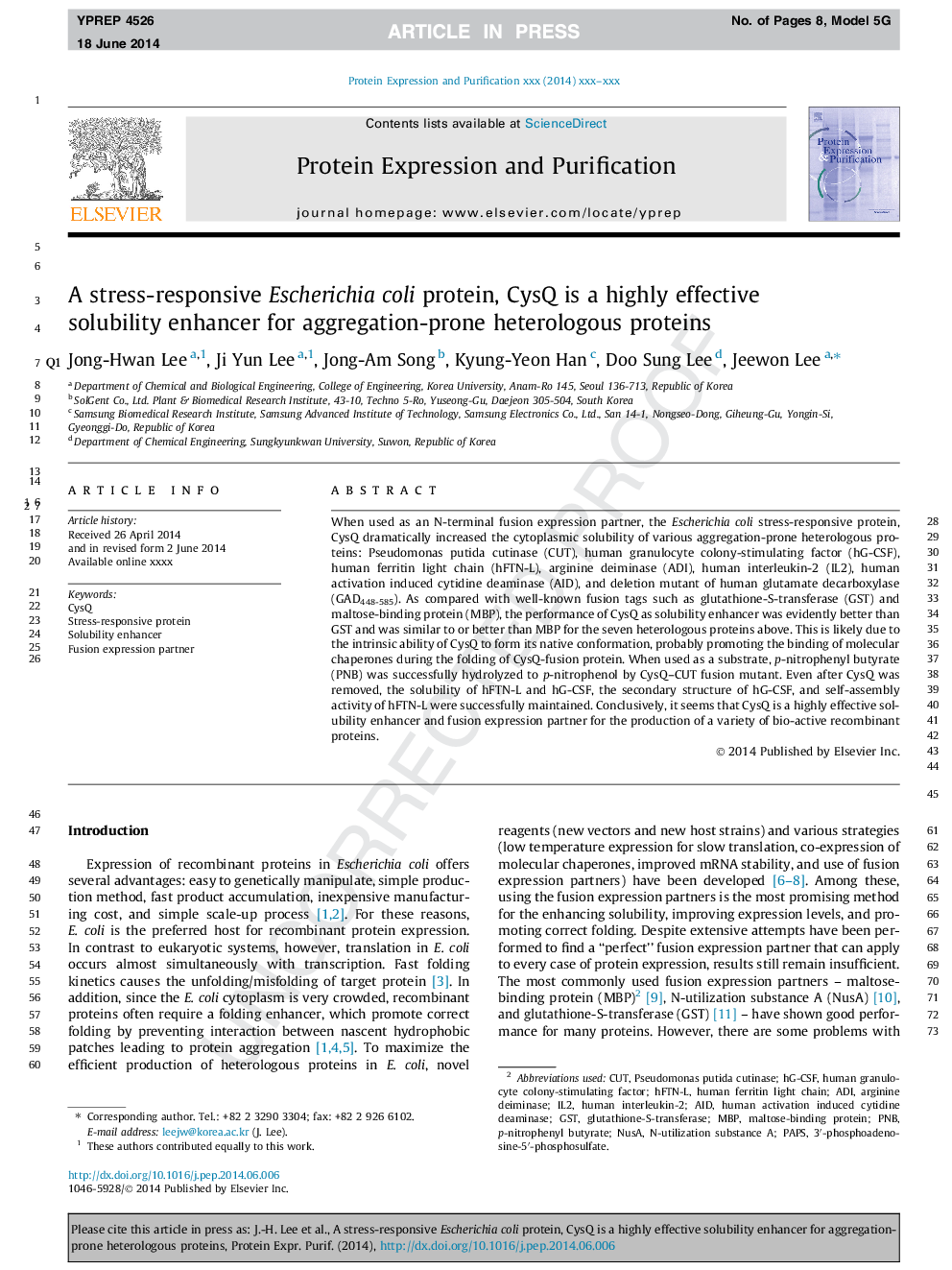| Article ID | Journal | Published Year | Pages | File Type |
|---|---|---|---|---|
| 8360490 | Protein Expression and Purification | 2014 | 8 Pages |
Abstract
When used as an N-terminal fusion expression partner, the Escherichia coli stress-responsive protein, CysQ dramatically increased the cytoplasmic solubility of various aggregation-prone heterologous proteins: Pseudomonas putida cutinase (CUT), human granulocyte colony-stimulating factor (hG-CSF), human ferritin light chain (hFTN-L), arginine deiminase (ADI), human interleukin-2 (IL2), human activation induced cytidine deaminase (AID), and deletion mutant of human glutamate decarboxylase (GAD448-585). As compared with well-known fusion tags such as glutathione-S-transferase (GST) and maltose-binding protein (MBP), the performance of CysQ as solubility enhancer was evidently better than GST and was similar to or better than MBP for the seven heterologous proteins above. This is likely due to the intrinsic ability of CysQ to form its native conformation, probably promoting the binding of molecular chaperones during the folding of CysQ-fusion protein. When used as a substrate, p-nitrophenyl butyrate (PNB) was successfully hydrolyzed to p-nitrophenol by CysQ-CUT fusion mutant. Even after CysQ was removed, the solubility of hFTN-L and hG-CSF, the secondary structure of hG-CSF, and self-assembly activity of hFTN-L were successfully maintained. Conclusively, it seems that CysQ is a highly effective solubility enhancer and fusion expression partner for the production of a variety of bio-active recombinant proteins.
Keywords
Related Topics
Life Sciences
Biochemistry, Genetics and Molecular Biology
Biochemistry
Authors
Jong-Hwan Lee, Ji Yun Lee, Jong-Am Song, Kyung-Yeon Han, Doo Sung Lee, Jeewon Lee,
